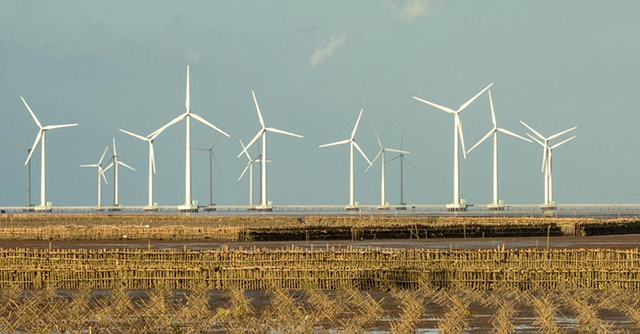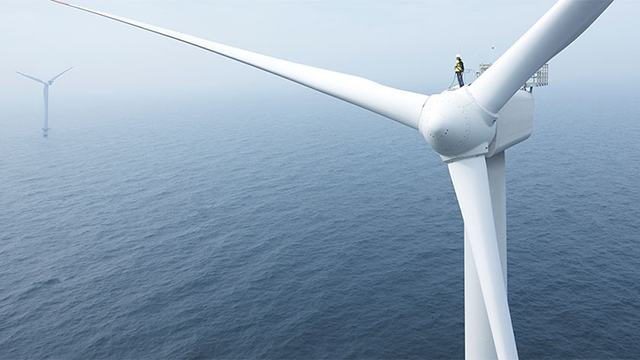
The factory, backed by the Turkish government in September, was originally intended to be built with the support of Korean solar manufacturer Hanwha Q Cells. The new partner is China Electronics Technology Group Corporation (CETC). Production is planned to start next year.
Turkish solar company Kalyon Enerji has reportedly secured the backing of the Chinese government to help it construct a 500 MW solar module factory.
Eren Engur, CEO and founder of Turkish consultancy Icarus Energy, told pv magazine Kalyon has signed a co-operation agreement with Chinese state-owned military surveillance contractor China Electronics Technology Group Corporation. The Chinese entity operates in the solar sector through its CETC Solar Energy Holdings Co Ltd unit. The planned factory will be near Ankara and is expected to begin manufacturing activities in April.
Last month, the Turkish government announced it would contribute a “super incentive” of TRL 1.99 billion ($333 million) towards the project. The factory construction contract was linked to a 1 GW generation capacity solar project tendered through the YEKA renewables procurement scheme and the fab was originally planned near the city of Konya, in southwestern Turkey.
Korean solar manufacturer Hanwha Q-Cells was Kalyon’s original partner on the project but dropped out this year.
The factory will be exempted from customs tax and VAT and will secure repayment of the latter as well as other fiscal and employee incentives including health insurance premiums and support for qualified personnel.
Source: pv magazine

German wind turbine manufacturer Nordex’s Turkey branch, Nordex Enerji AS, in partnership with Turkish Women in Renewable and Energy Network (TWRE), aims to enhance Turkish young women’s participation in the wind energy sector through a new training program.
The training is a first for Turkey in empowering young women in this sector. The three-day training, which was held in Turkey's Aegean city of Izmir between Oct. 23 and 25, brought together young female Turkish professionals, engineering students and new graduates from various schools and cities.
The participants received first-hand information on Nordex’s history and turbine portfolio, wind development, turbine description and network. A wind park tour was also organized to Nordex’s Pitane Windpark in Aliaga on the third day.
Nordex Enerji AS’s Training Coordinator Oya Torum told Anadolu Agency as Nordex attaches great importance to female employment in their company, they want to increase women's participation particularly in field operations and technical positions.
"My idea of the wind sector changed drastically the moment I came across a wind turbine. I am now well aware of the fact that the wind energy sector is a heavy and dangerous one. However, many women work in blue-collar jobs in Scandinavian countries. Why not in Turkey?" Torum said.
Torum recalled that the percentage of females employed in white-collar jobs in Nordex Enerji AS is around 27%, while blue-collar employment is almost zero.
"We receive almost no job applications for blue-collar jobs, and therefore we could not avail of the opportunity to have women employees in these fields. However, we definitely want to increase this number and that is why we have organized this training," she explained.
With a market share of 26.7% and an installed wind capacity of 2,038 megawatts (MW), the Nordex Group is the market leader in Turkey. Along with 110 MW capacity at the Soke Wind Farm in Aydin near the Aegean coast, the Nordex Group plans to further install turbines with a total capacity of 266 MW up to the end of 2020.
Nordex Enerji AS started its operations in Turkey in April 2009. Along with its headquarters in Istanbul, the company has a services office and a technical training center in Izmir. The company currently has 249 Turkish employees.
Torum further detailed female employment statistics in the company. In the Human Resources and Culture and Administration Department, 67% are female. The Finance Department has 60% representation, the Sales Department has 25%, the Services Department has 22%, Sales Support and Project Engineering contains 20%, and 17% are in the Project Management Department.
She also drew attention to the lack of sufficient numbers of women employed in the renewables sector that has recently come to the surface and in which the management is now focusing on.
Torum asserted the partnerships between academic institutions and the private sector has a vital role to play in combining theoretical knowledge with practical experience. To this end, she said the Nordex Technical Training Center, with its substantial technical knowledge and know-how, could share this knowledge and experience with young women who are trying to navigate their way in the renewables sector.
"This training for young women only is a first in Turkey and we would like to continue with this. Young women are very interested in the wind energy sector and would prefer to be employed in this area. After this training, we hope they continue to develop their skills in this sector and serve their country, the sector and us," she concluded.
The Nordex Group has installed more than 25 gigawatts of wind energy capacity in over 40 markets, and in 2018, generated revenues of around €2.5 billion. The company has more than 6,000 employees worldwide.
Source: AA

Offshore wind power will expand impressively over the next two decades, boosting efforts to decarbonise energy systems and reduce air pollution as it becomes a growing part of electricity supply, according to an International Energy Agency report published today.
Offshore Wind Outlook 2019 is the most comprehensive global study on the subject to date, combining the latest technology and market developments with a specially commissioned new geospatial analysis that maps out wind speed and quality along hundreds of thousands of kilometres of coastline around the world. The report is an excerpt from the flagship World Energy Outlook 2019, which will be published in full on 13 November.
The IEA finds that global offshore wind capacity may increase 15-fold and attract around $1 trillion of cumulative investment by 2040. This is driven by falling costs, supportive government policies and some remarkable technological progress, such as larger turbines and floating foundations. That’s just the start – the IEA report finds that offshore wind technology has the potential to grow far more strongly with stepped-up support from policy makers.
Europe has pioneered offshore wind technology, and the region is positioned to be the powerhouse of its future development. Today, offshore wind capacity in the European Union stands at almost 20 gigawatts. Under current policy settings, that is set to rise to nearly 130 gigawatts by 2040. However, if the European Union reaches its carbon-neutrality aims, offshore wind capacity would jump to around 180 gigawatts by 2040 and become the region’s largest single source of electricity.
An even more ambitious vision – in which policies drive a big increase in demand for clean hydrogen produced by offshore wind – could push European offshore wind capacity dramatically higher.
China is also set to play a major role in offshore wind’s long-term growth, driven by efforts to reduce air pollution. The technology is particularly attractive in China because offshore wind farms can be built near the major population centres spread around the east and south of the country. By around 2025, China is likely to have the largest offshore wind fleet of any country, overtaking the United Kingdom. China’s offshore wind capacity is set to rise from 4 gigawatts today to 110 gigawatts by 2040. Policies designed to meet global sustainable energy goals could push that even higher to above 170 gigawatts.
The United States has good offshore wind resources in the northeast of the country and near demand centres along the densely populated east coast, offering a way to help diversify the country’s power mix. Floating foundations would expand the possibilities for harnessing wind resources off the west coast.
Source: IEA

Hedge funds, fire victims and public officials all have a stake in what becomes of the giant utility, now in bankruptcy. And Warren Buffett’s name is being invoked.
California’s Pacific Gas & Electric problem isn’t going away.
The giant utility has been in bankruptcy for months, and it is not clear who will end up controlling it. This uncertainty has extended into the wildfire season, exposing not just the shortcomings in PG&E’s fire-prevention efforts but also the threat that fire liabilities still pose to the company’s viability.
No surprise, then, that state officials are getting restless and looking for bolder ways forward.
Gov. Gavin Newsom has declared that his office would “love” to see Warren E. Buffett’s holding company, Berkshire Hathaway, make a bid for PG&E. And Sam Liccardo, mayor of San Jose, favors a sweeping plan that would put PG&E in its customers’ hands.
But any idea must go through the federal bankruptcy court where two camps of investors — one aligned with wildfire victims seeking damages from PG&E, and another with management — have submitted plans to reorganize the company. PG&E, facing an estimated $30 billion or more in liabilities, mainly from fires in 2017 and 2018, sought bankruptcy protection in January. Its stock soared in the following months. On Wall Street and beyond, there was hope that the reorganization would stabilize PG&E, in tandem with a new state fund intended to keep fire liabilities from overwhelming utilities.
But the company’s shares plunged in recent weeks and even its bond prices weakened, suggesting that investors feared that plans to fix PG&E had fallen short.
In theory, the multibillion-dollar state wildfire fund — being set up to help utilities bear the cost of this year’s fires and those in the future — should be an effective backstop. But there are snags. To gain access, PG&E must emerge from bankruptcy by the middle of next year and, even if it does that, it stands to recoup only 40 percent of eligible damage claims for fires that take place while it is in bankruptcy. (Once it is out of bankruptcy and has satisfied other conditions, it will qualify for full coverage from the fund, which would be financed by bonds and company contributions.) Because PG&E’s equipment is suspected of having caused some of the recent fires, the company may end up facing another large bill for damages.
PG&E has been turning off power across vast parts of its service area during high winds, because fallen power lines are a major cause of wildfires. The blackouts have drawn widespread criticism. But if PG&E, fearful of the backlash, limits the scope of its power cuts, there could be more fires.
“We’re coordinating with federal, state and local partners to minimize risks stemming from the shut-offs until the extreme weather event has subsided,” Jeff Smith, a PG&E spokesman, said by email. “For the time being, this is not a political issue. It’s a safety issue, and we’re committed to doing what is necessary to keep our customers safe.”
But investors, needed to supply capital, will remain sensitive to the political pressures on PG&E, said Michael Wara, director of the climate and energy policy program at Stanford University. They may fear that PG&E won’t shut off enough lines, he said, and that “the future will be one where you use up the wildfire fund and you’re back where you were, maybe even in the not-too-distant future.”
The competing plans for reorganizing PG&E — each put forward by groups dominated by hedge funds — envision putting new money into the company, much of it to pay off liabilities related to fires before the bankruptcy.
Source: New York Times

Germany's government expects the country will use less electricity in 2030, even though renewable power is meant to replace fossil fuels in many sectors from transport to heating, reports Karsten Wiedemann in specialist publication energate.
In response to a parliamentary enquiry, the ministry for economics and industry forecast that power consumption will be slightly below today's level at 590 TWh in ten years, but adds that "substantial efforts" will be required to increase efficiency. Oliver Krischer, deputy leader of the Greens parliamentary group, called the government forecast ridiculous "especially because there are no significant measures to increase efficiency”.
The government’s official goal is to reduce gross power consumption by 10 percent by 2020 (compared to 2008 levels), but Germany has only reduced it by about 4 percent by 2018. In addition, Germany plans to achieve a 65 percent renewables share in gross electricity consumption by 2030. The government's renewable expansion plans spelled out in its 2030 climate package should be sufficient to reach the target if power consumption declines, writes Wiedemann. But they will be insufficient if power demand increases, which will depend strongly on its use in sectors such as mobility. The German Renewable Energy Federation BEE expects power demand will rise to 740 TWh in 2030, which would require much more renewables installations to hit the 65 percent share, writes Wiedemann. The German Wind Energy Association BWE said the government power demand forecast suggests it had given up on ambitions to electrify other sectors.
Source: Clean Energy Wire

Siemens and the Ponemon Institute have released a new report that assesses the global energy industry’s ability to meet the growing threat of cyberattacks to utilities and critical infrastructure connected to the electrical grid.
The report – Caught in the Crosshairs: Are Utilities Keeping Up with the Industrial Cyber Threat? – details the utility industry’s vulnerability to cyber risk and its readiness to address future attacks, and provides solutions to help industry executives and managers better secure critical infrastructure.
“The utility industry has woken up to the industrial cyber threat and is taking important steps to shore up defences, we hope this report helps utilities benchmark their readiness and leverage best practices to stay ahead of attackers,” says Leo Simonovich, Siemens VP & global head, industrial cyber & digital security. The study surveyed 1,726 utility professionals responsible for securing or overseeing cyber risk in Operational Technology (OT) environments at electric utilities with gas, solar, wind assets, and water utilities across the globe.
It identified key vulnerabilities in energy infrastructure that malicious actors seek to exploit, including common security gaps that are created as utilities rely on digitalization to leverage data analytics, artificial intelligence, and balance the grid with intermittent renewable energy and distributed power generation. This remains a major challenge for many organizations across the industry. Only 42% rated their cyber readiness as high, and only 31% rated readiness to respond to or contain a breach as high.
- As utilities increasingly adopt business models that connect OT power generation, transmission, and distribution assets to Information Technology (IT) systems, critical infrastructure is more vulnerable to cyberattacks, according to the study.
- The risk of cyberattacks on the utility industry may be worsening with 56% of respondents reporting at least one shutdown or operational data loss per year, and 25% impacted by mega attacks, which are frequently aided with expertise developed by nation-state actors.
- The vulnerability of critical infrastructure to cyberattacks has potential to cause severe financial, environmental and infrastructure damage, and according to all respondents, 64% say sophisticated attacks are a top challenge and 54% expect an attack on critical infrastructure in the next 12 months.
- Cyber threats present a greater risk to critical infrastructure – compared to IT systems – and are concerned with unique industry challenges, including ensuring availability, reliability and safety of electricity delivery.
- Industry-wide, readiness to address cyberattacks is uneven and has common blind spots, especially with regards to the unique cybersecurity requirements for OT, and the importance of distinguishing between security for OT and security for IT.
Source: Smart Energy International
The Cybersecurity Guide for Leaders in Today’s Digital World
Cyberattacks are one of the top 10 global risks of highest concern in the next decade, with an estimated price tag of $90 trillion if cybersecurity efforts do not keep pace with technological change. While there is abundant guidance in the cybersecurity community, the application of prescribed action continues to fall short of what is required to ensure effective defence against cyberattacks. The challenges created by accelerating technological innovation have reached new levels of complexity and scale – today responsibility for cybersecurity in organizations is no longer one Chief Security Officer’s job, it involves everyone.
Please click here to read the full report.

